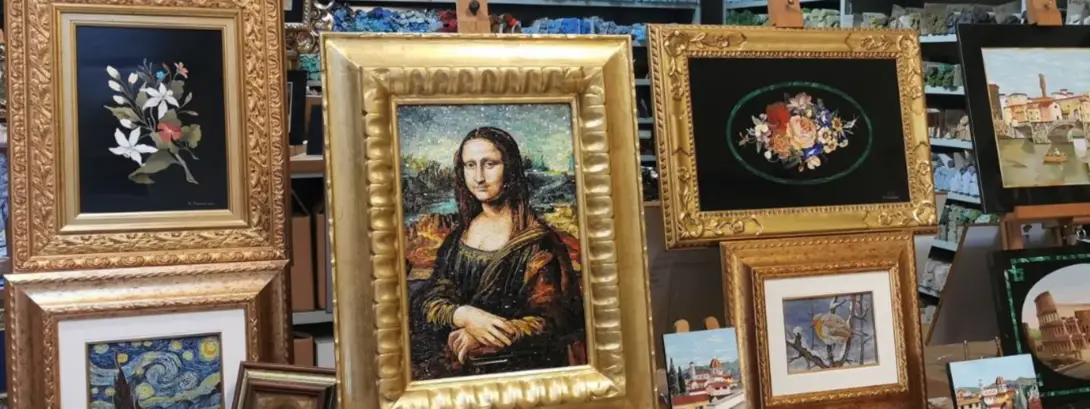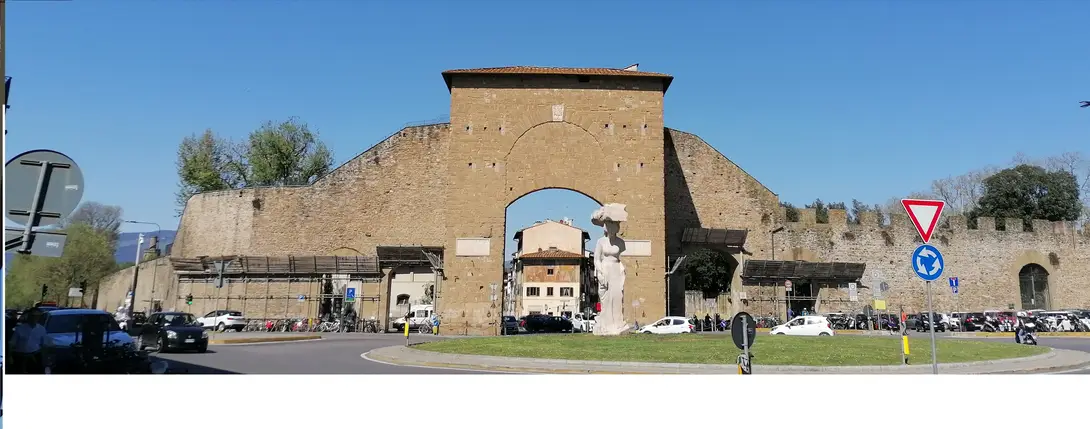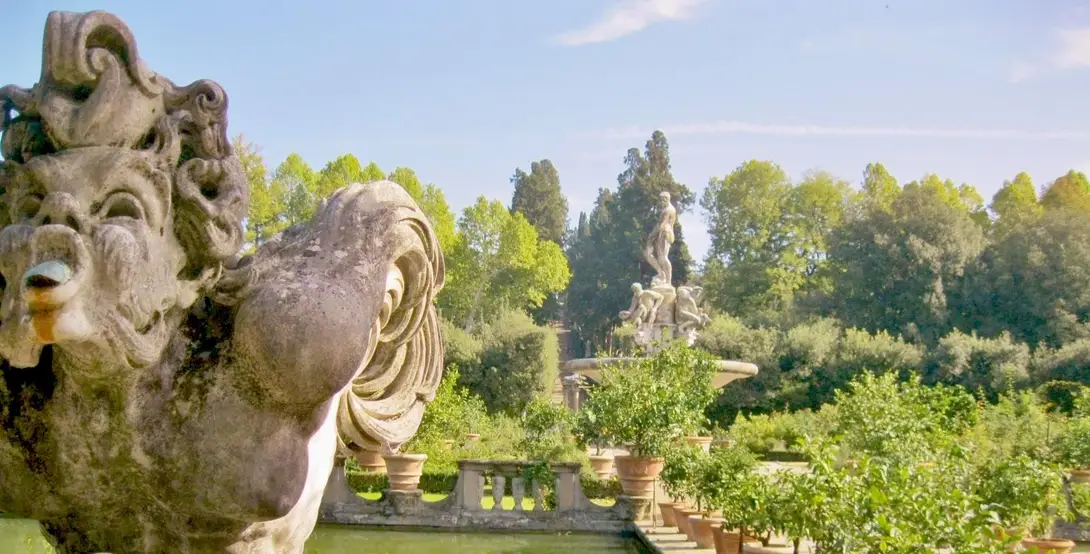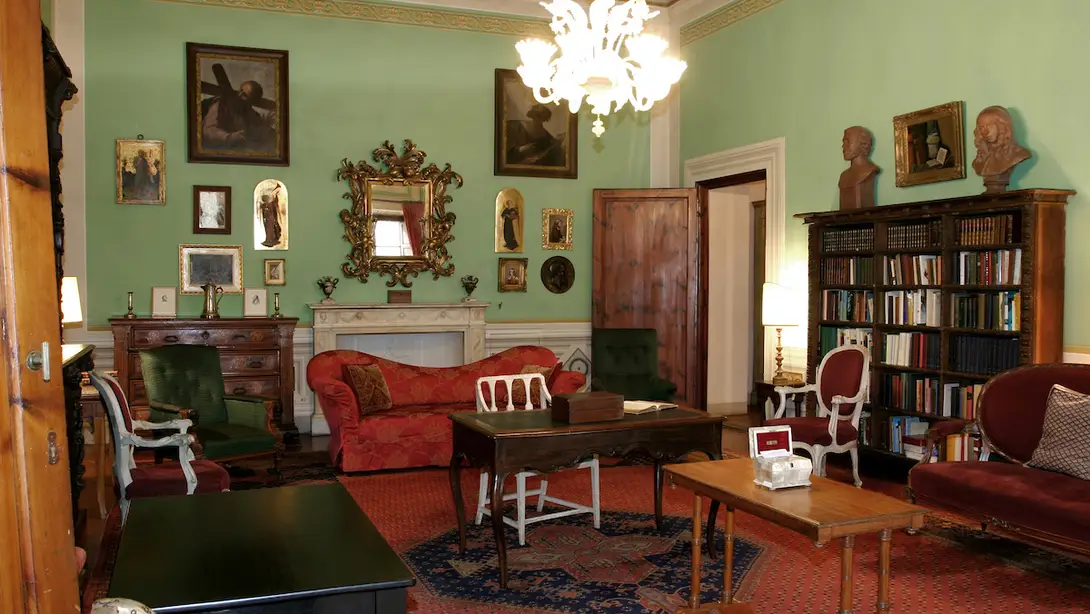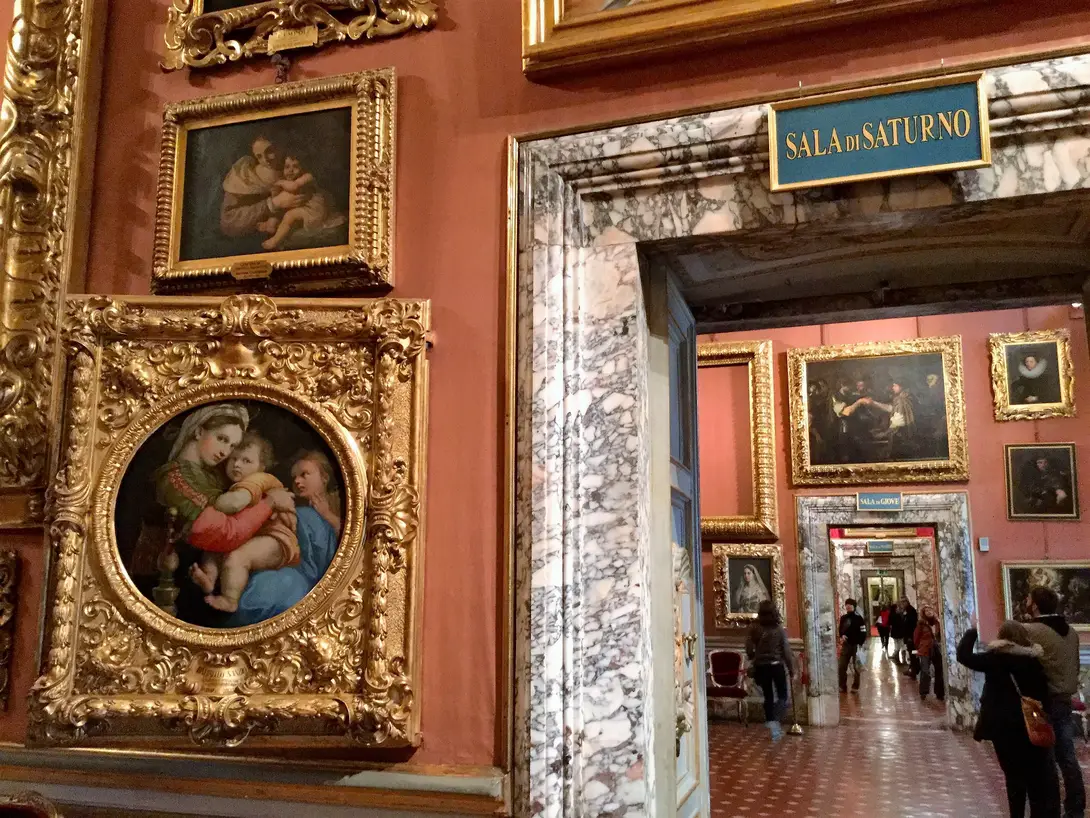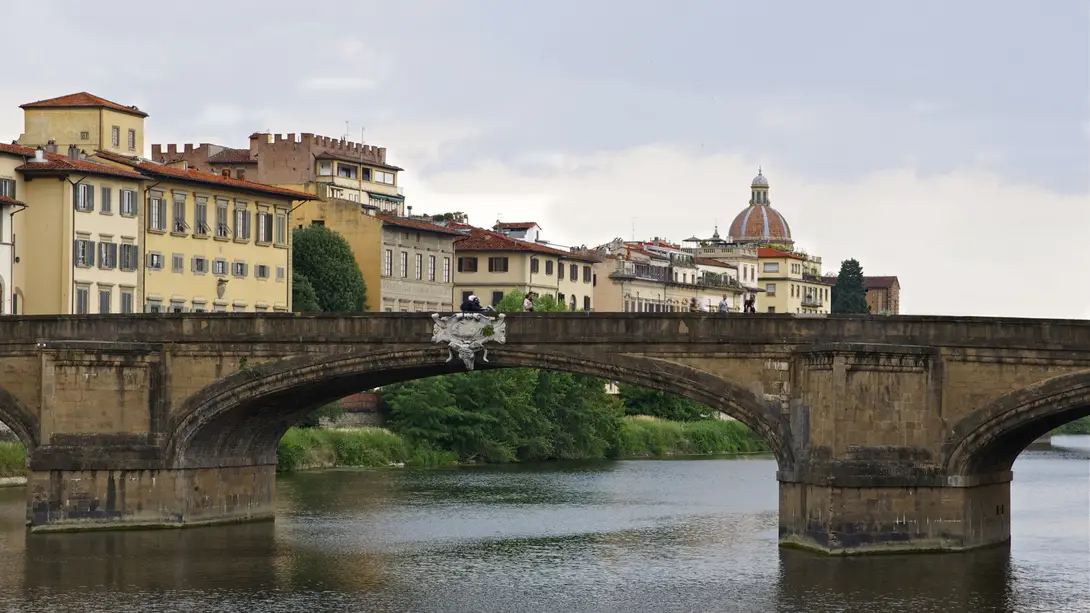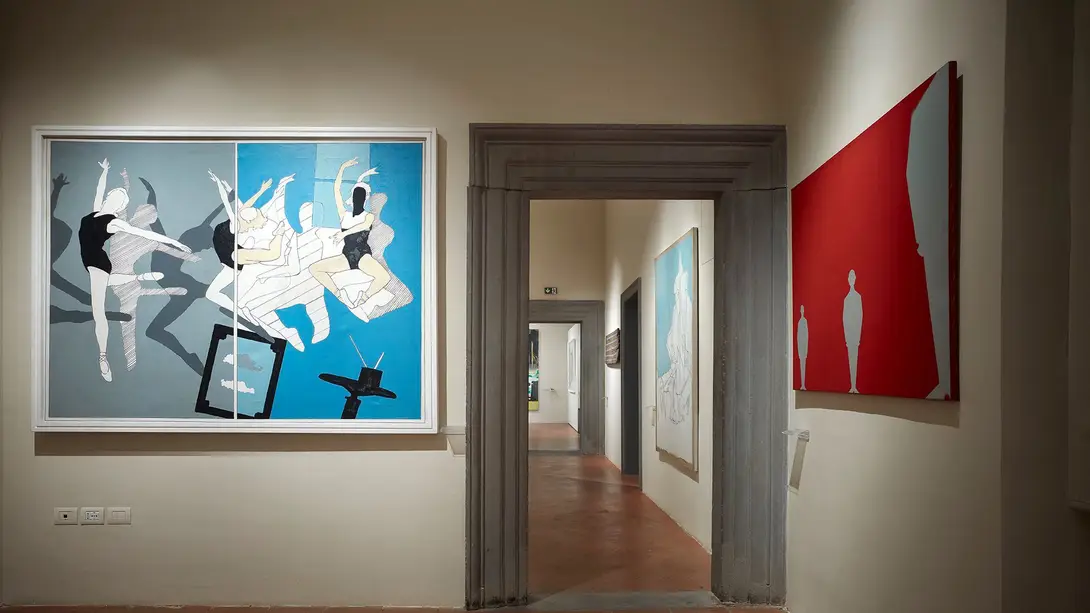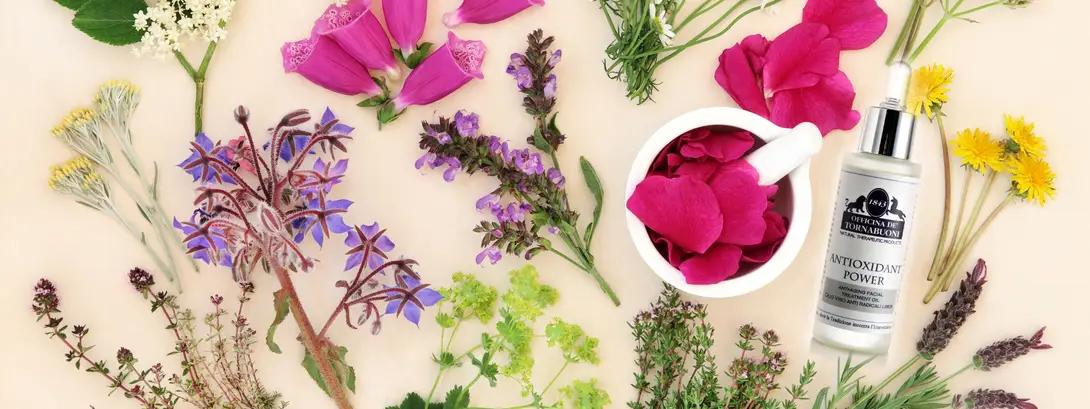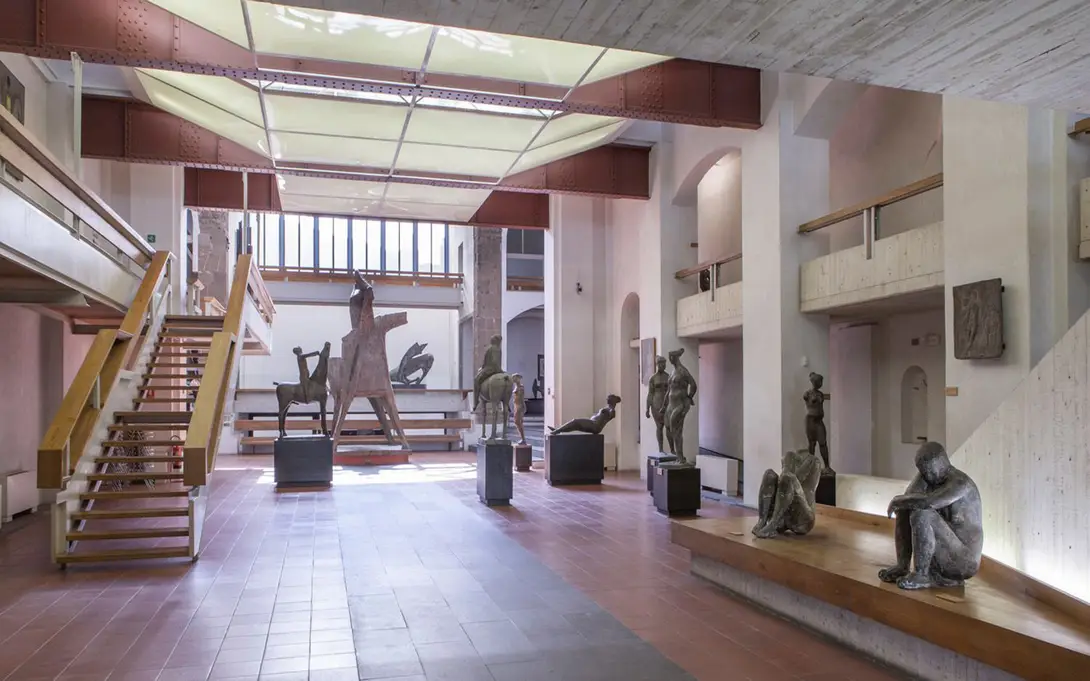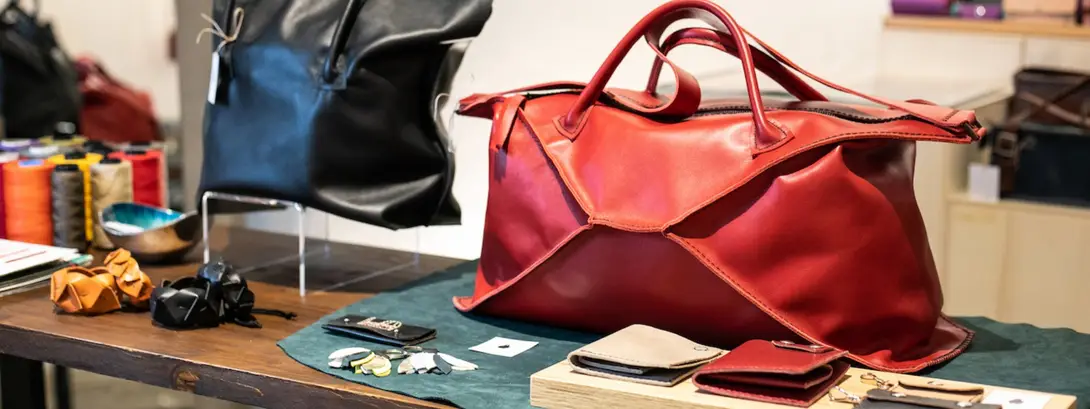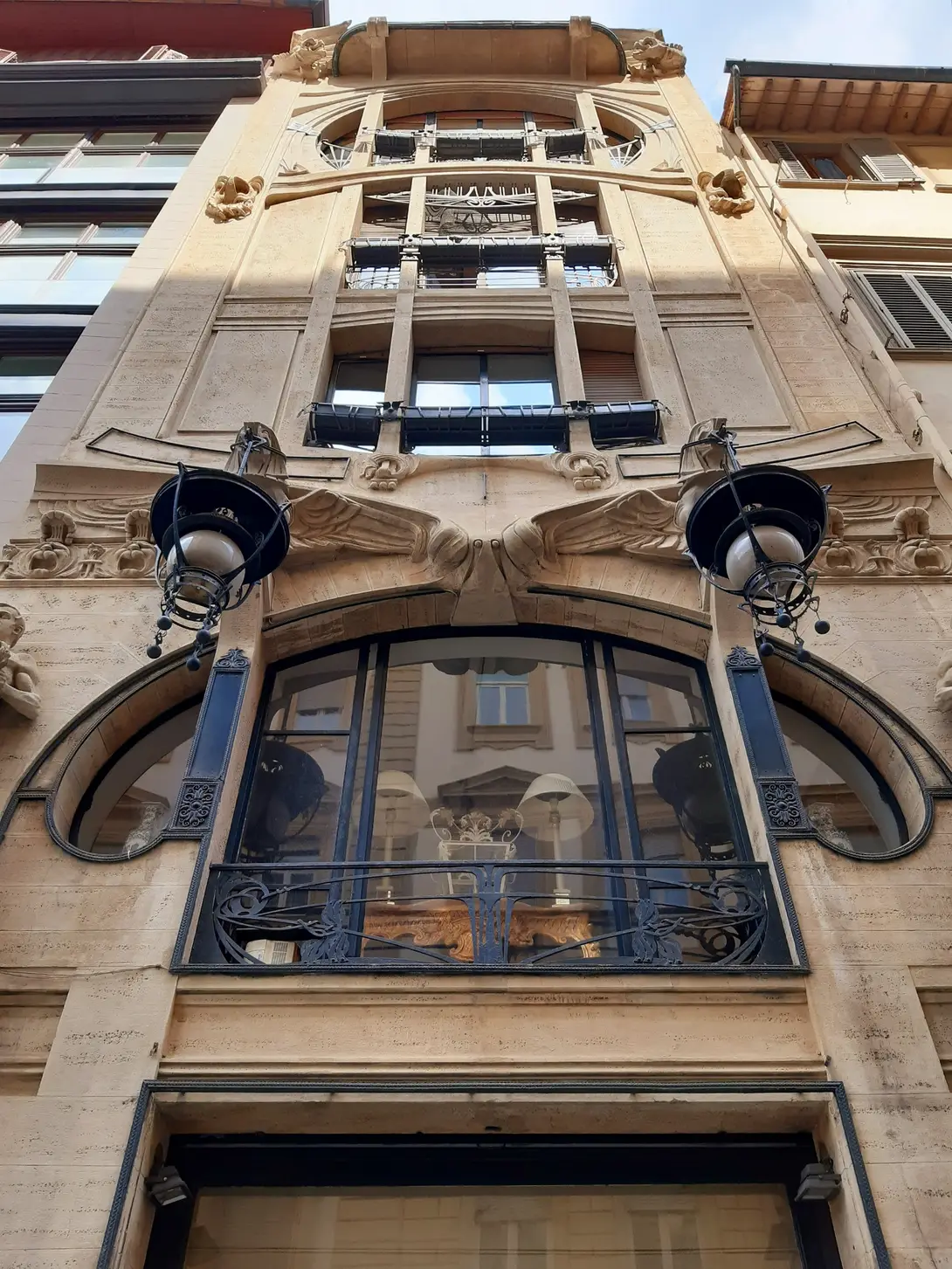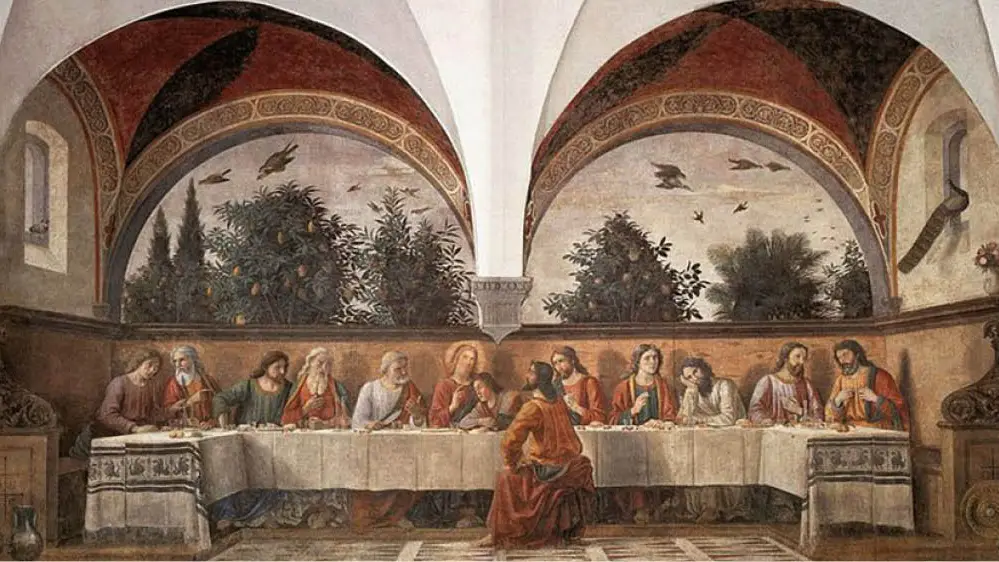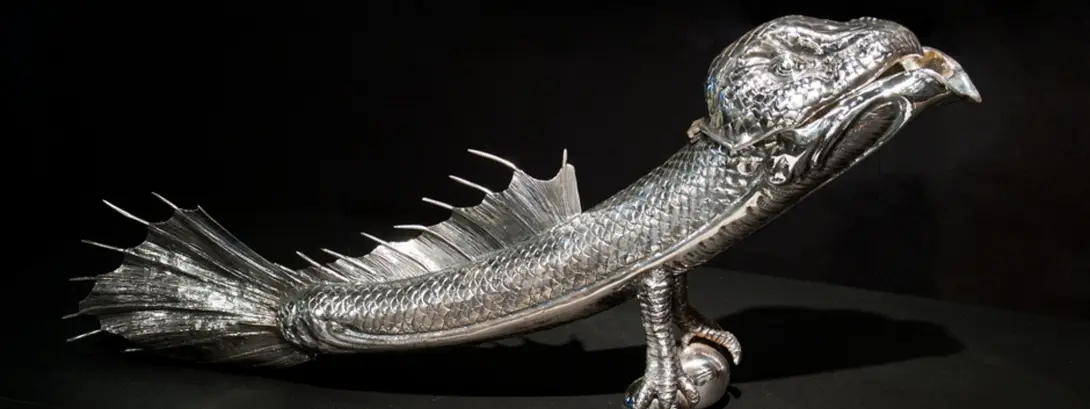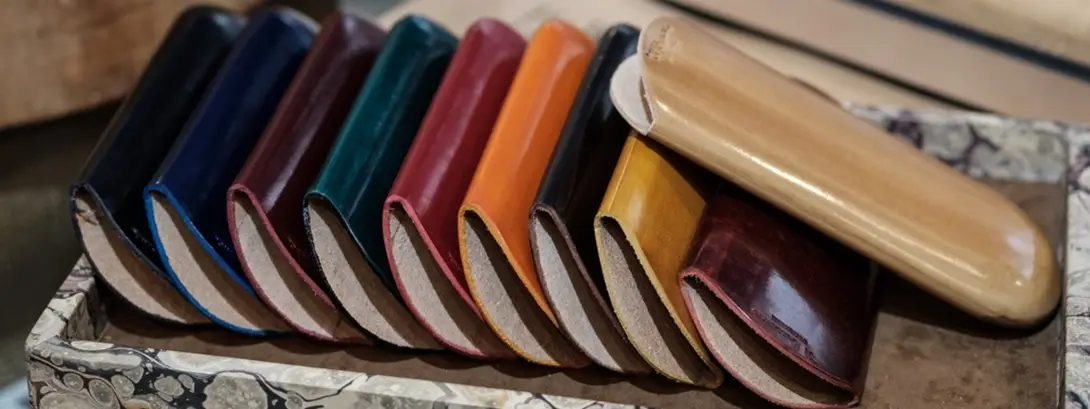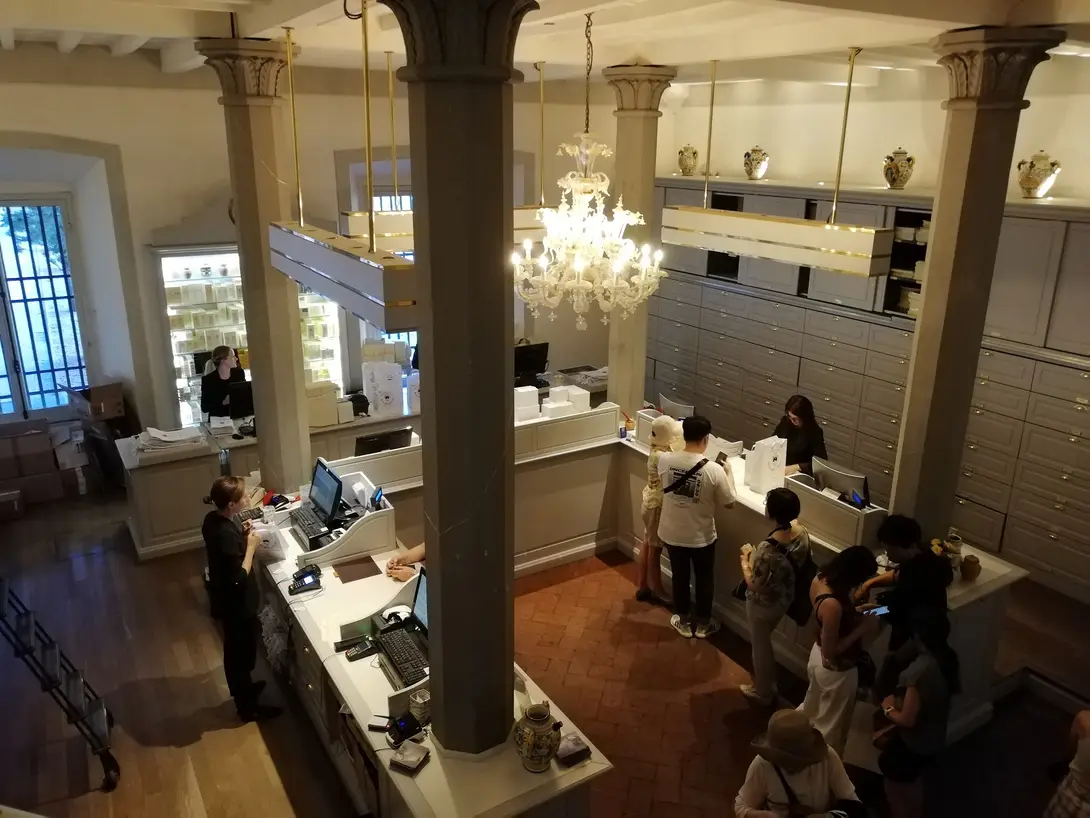
Crafstmanship bike tour
A tour that crosses the city of Florence, taking visitors to discover the excellence of craftsmanship straddling the two banks, on either side of the Arno, to be done on foot for lovers of long walks, or by bike for a faster and decidedly green route.
An uphill start, like any self-respecting adventure, the journey will be rewarded by the marvel of masterpieces of Florentine semiprecious stone and micromosaic work, and then on to admire the art of restoration. It continues among silverware and jewellery, and the great workmanship of leather.
Between workshop and workshop, you will also discover a Florence that, although very central, is less obvious and well-known: museums, collections and palaces that you might not expect, but all very accessible on this route.
If you don't have a bicycle, try bike sharing, it is also electric!
This itinerary is created inside the European Project Crafts Code
Comune di Firenze
The places
Stages
Fratelli Traversari
It is not easy nowadays to find an artisan company that has proudly reached its fourth generation: the Fratelli Traversari company is one of the few workshops that continues a tradition of craftsmanship that began at the end of the 19th century.
The history of the Fratelli Traversari company began in Florence with the founder Arturo around the end of the 1870s when it was just a small souvenir shop in Via Ser Ventura Monaci, in the Piazza Ferrucci area, but already specialised in high quality micromosaic costume jewellery.
From 1944, the business passed into the hands of Arturo's two sons, Alfredo and Aldo, (hence the name Fratelli Traversari) who, in Via Pindemonte, continued the successful production of earrings, rings, brooches, bracelets, frames and crosses in micromosaic.
This technique, which originated in Rome at the end of the 18th century, uses instead of the traditional square tesserae, the so-called 'teghe' (thin rods of spun enamel glass in various shapes and colours) obtained by placing Murano glass plates in a special kiln which, thanks to the spinner's skill, are fused together to obtain different colours and shaped into various shapes: plates, rose petals, daisies, myosotis, leaves and many others.
Later the business moved to Via Lorenzo Bellini and from the seventies the management passed into the hands of Alfredo's son, Franco, who, at the age of just twenty-five, started the production of micro-mosaic, cut glass and Florentine commesso in semi-precious stones.
For some years now, Franco's two children, Daniele and Letizia, have also been actively involved in the company and, together with their cousin Lorenzo, who specialises in semi-precious stone mosaic, have brought a breath of fresh air to the workshop.
Porta Romana
Porta Romana, founded in 1328, is the largest gate in Florence after San Frediano; in ancient times, it allowed people to leave the city in the direction of Siena and Rome.
The central lily, a work by Giovanni Pisano in 1331, is made of marble, while the two side headstones, also in white marble, commemorate the visit of the Medici Pope Leo X in 1515 and the Holy Roman Emperor Charles V in 1536.
Today, there are five openings around the door; in the past it was only the one on the left, the other four were added in 1930 to facilitate the traffic and the access to Boboli Gardens.
Finally, there were originally statues on the outside of the door, but today only those of the Madonna and Child, St. Peter and St. Paul remain, which we can admire today under the steps of the courtyard of the Bargello Museum.
Boboli Gardens
The Medici family was the first to take care of the Boboli garden’s arrangement, creating the model of the Italian-style garden, then an example for many European courts, in which a rational order is given to the vegetation and the geometries of the avenues and plants are embellished with grottoes, statues and fountains.
Opened to the public in 1766, it is a real open-air museum: valuable are the Roman statues and those of Renaissance sculptors such as Baccio Bandinelli and Giambologna; the amphitheatre, where court performances took place; the Grotta del Buontalenti, where Michelangelo's Prisons were placed (now replaced by copies).
Casa Guidi
Robert Browning and Elizabeth Barrett arrived in Florence in 1847, when Elizabeth was already a well-established poetess. They lived in the city for fourteen years until her death in 1861, making friends with many well-known Italians.
Elizabeth came up with the name of ‘Casa Guidi’ to give an idea of a family home, and except for a few more elegant items, the paintings and furniture were bought from second-hand shops. Overall the apartment has retained its former appearance.
Palatine Gallery and Royal Apartments - Pitti Palace
The Palatine Gallery and the Royal Apartments occupy the whole of Palazzo Pitti’s piano nobile. The gallery was established in the late 18th and early 19th centuries by the Lorraine, who hung a mass of artworks, principally from the Medici collections begun around 1620, in the reception rooms. There are works by Raphael, Titian, Caravaggio, Rubens, Pietro da Cortona and other Renaissance and 17th-century artists from Italy and elsewhere in Europe.
The walls of the rooms are plastered with paintings, in keeping with the tradition of 17th-century picture galleries: they are not arranged chronologically or by school, but reflect the personal taste of the collectors. There is a fine Madonna and Child by Filippo Lippi, some of Raphael’s most famous paintings, including the so-called Madonna del Granduca and La Velata, a Young Saint John the Baptist by Andrea del Sarto, Titian’s La Bella and portraits by Veronese and Tintoretto.
The Royal Apartments consist of fourteen rooms in the right wing of the palace, formerly the private residence of the ruling families, and are furnished with furniture, trappings and artworks ranging from the 16th to 19th centuries.
Renato Olivastri
In Florence, in the ancient workshop of Via de Velluti 21r, located in the Santo Spirito district, the heart of Florentine craftsmanship, wooden works in general are restored: antique and inlaid furniture, frames, candlesticks, wooden supports for paintings on wood.
Renato Olivastri, like his master before him, specialises in the restoration of Boulle-style furniture.
The workshop collaborates with specific professionals for gilding, sculpture, decoration and painting.
Inlaid works in antique and modern styles are also produced on commission.
The workshop also deals with the disinfestation of furniture from wood-boring insects, using modern techniques that allow for totally ecological interventions, effective treatment and respect for the work.
The workshop also offers workshops and courses, also customised, in wood inlay and introduction to antique furniture restoration.
Ponte Santa Trinita
The original bridge was built in1252, and it was named after the nearby church. Like all of Florence's historical bridges, it was rebuilt several times following the numerous floods of the Arno; after the terrible one of 1557, Cosimo I de' Medici commissioned its reconstruction to Bartolomeo Ammannati, who was perhaps inspired by an idea of Michelangelo Buonarroti. Made of pietra forte and decorated with commemorative epigraphs, it was considered the most elegant bridge in Florence, worthy of the grand ducal processions that used to pass over it. The statues at both ends are by Giovanni Caccini (Autumn and Summer), Taddeo Landini (Winter) and Pietro Francavilla (Spring). Destroyed by the Germans during the Second World War, it was rebuilt exactly "as it was and where it was" in 1958.
Museo Ferragamo
The Ferragamo Museum was established in 1995 by Ferragamo family, with the aim of introducing the artistic qualities of Salvatore Ferragamo, the founder of the eponymous company, and his innovations in the field of footwear. These innovations have positioned him as one of the major figures in 20th-century design and fashion.
Following the ever-evolving world of fashion, it was decided in 2006 to adopt the approach of changing the exhibition themes annually. Starting from the legacy of Salvatore Ferragamo, his creations, and the values he believed in, these themes aim to blend the past with contemporary elements. This involves integrating art, architecture, design, social history, philosophy, and science into the narrative of the museum.
Collezione Roberto Casamonti
The Roberto Casamonti Collection is located in the historic heart of Florence, at Piazza Santa Trinita 1 (Via de' Tornabuoni).
Set up on the noble floor of Palazzo Bartolini Salimbeni, the Collection is housed in a Renaissance building designed in 1520 by Baccio d’Agnolo and showcases works by the great masters of contemporary art, aiming to organize multidisciplinary exhibitions and events that enhance the dialogue between the arts.
The Casamonti exhibition is divided into two sections: the first includes works created from the early 20th century to the 1960s by artists such as Picasso, Chagall, de Chirico, Dalí, Kandinsky, Boccioni, Balla, Morandi, Burri, Fontana, and many others. The second section features works from the 1970s to the 2000s by artists of the caliber of Miró, Basquiat, Warhol, Kapoor, Kiefer, Boetti, Abramović, and many more.
Palazzo Strozzi
Palazzo Strozzi, with its imposing facades clad in pietra forte, is one of the most significant Renaissance palaces in Florence and a privileged venue for important art exhibitions.
One of the rooms on the ground floor houses a permanent exhibition that tells the story of Palazzo Strozzi. It was built in 1489 on behalf of Filippo Strozzi, one of the wealthiest merchants in Florence, who wanted it larger than Palazzo Medici. The construction remained unfinished when the Strozzi family, rebels against Medici rule, fell into disgrace in the 16th century.
The elegant courtyard, designed by Simone del Pollaiolo, is surrounded by arches resting on columns with Corinthian capitals; it is accessed through imposing portals that open in three directions (Via Tornabuoni, Via Strozzi, Piazza Strozzi).
The palace houses cultural institutions, including the National Institute for Renaissance Studies, but above all the Fondazione Palazzo Strozzi, the heart of cultural activity: in fact, the rooms are always the venue for important art exhibitions. In the spaces of the Centre for Contemporary Culture Strozzina, in the basement of the palace, initiatives dedicated to contemporary art take place.
Officina De’ Tornabuoni
The history of Officina de' Tornabuoni began in the historical area of Florence, in the Anglo-American pharmacy founded by Henry Roberts in 1843.
De' Tornabuoni's workshop philosophy of wellbeing blends with profound technical and scientific knowledge, inherited from the ancient Florentine officinal tradition and expanded through cutting-edge research into beauty care and body health. In the ancient apothecary's shop one can discover cosmetics, perfumes, herbal teas...
Marino Marini Museum
The Marino Marini Museum, dedicated to the famous 20th-century Italian sculptor, is housed in the former church of San Pancrazio, where Renaissance lines are combined with modern renovation.
It is a monographic museum that houses 184 works by sculptor Marino Marini (1901-1980), arranged according to the artist's instructions in the choice of materials and natural lighting of the rooms. The works were created between 1916 and 1977. The exhibition, spread over the different levels of the church spaces, includes bronze and concrete sculptures of very different sizes, polychrome plaster casts and canvases, portraits and drawings. Exhibitions dedicated to various 20th-century and contemporary artists are periodically held in the crypt.
The Tempietto del Santo Sepolcro (Temple of the Holy Sepulchre) by Leon Battista Alberti, a Renaissance work with precious marble inlays, rich in allegorical meanings, is also on display.
Il merlo bags
Il Merlo Bags presents leather bags entirely handmade in Florence by Japanese artisan Kyoko Morita.
The refined yet fun design enhances the charm of the wearer.
Her high quality bags, hand stitched stitch by stitch, will fill your everyday life.
Casa Galleria
Le architetture liberty a Firenze sono localizzate quasi sempre fuori dal centro storico. Fa eccezione la casa galleria di Borgo Ognissanti, disegnata da Giovanni Michelazzi per la committente Argia Marinari Vichi nel 1911.
Stretto fra due palazzi più antichi, l'edificio si inserisce nel tessuto urbano con le eleganti linee curve della facciata, le raffinate ringhiere e una grande apertura rotonda, collocata all'ultimo piano.
Cenacolo di Ognissanti o del Ghirlandaio
Frescoed with the Last Supper by Domenico Ghirlandaio in 1488, the refectory in the convent of Ognissanti still has the original lavabos and portal, and an early 15th-century Annunciation. The cloister, decorated with 17th-century frescoes (Scenes from the Life of Saint Francis), gives access to the church, which houses two other paintings by Ghirlandaio, a Saint Jerome and a Madonna della Misericordia.
Mari Yoshida
Florence is the capital of the Renaissance. Here live ancient arts and styles developed over the centuries. Among these arts are embossing and chiselling, which Mari and Giuliano continue to maintain and renew, giving life to new creations, following their own instincts and driven by curiosity and careful observation of nature.
In their Florentine workshop, in Borgo Ognissanti, Mari and Giuliano create customised, dedicated and personalised works. The mastery of this melting pot allows the creativity of the master craftsmen to be fused with the customer's desire.
GF 89 Giuseppe Fanara
Giuseppe Fanara has been working in his leather workshop in the historical centre of Florence for over 30 years, a place full of passion for the tradition of classic leather goods and the ancient working of 'Cuoietto Fiorentino', a technique that enhances the malleability of leather and the brilliance of colours given by hand polishing with the 'bussetto', an ancient shoemaker's tool.
Officina Profumo Farmaceutica di Santa Maria Novella
The Officina Profumo-Farmaceutica di Santa Maria Novella is one of the oldest pharmacies in the world, its origins date back to the XIII century. Dominican monks who lived at the monastery of Santa Maria Novella Church ran a small infirmary to care for sick monks and Florence's poor. They cultivated herbs and medicinal plants to make syrups, pills and balms for their patients. One of the first remedies was the rose water, used to disinfect environments during the plague and as a bland medicament. It officially opened as a shop in 1612, due to the ever-increasing demand for the medicinal balms. The alchemist Fra Angiolo Marchissi, the first director of the shop in via della Scala, invented new preparations and ran the business very efficiently so that, shortly afterwards, it was named Foundry of His Royal Highness by the then Grand Duke of Tuscany.
Lots of perfumes and fragrances are still the same as they were produced for the Queen: the Eau de la Reine (Queen's Water) was invented by the monks upon the request of Florence's greatest ambassador, Catherine de’ Medici, who married King Henry II of France in 1533. She introduced this perfume (and many others) to the French court. Its fame soon spread throughout France. The shop was also renowned for herbal medicine: the monks used to grow plants and herbs with natural methods, without pesticides, and it is still the same today in the manufacturing plant in via R. Giuliani.
Visitors who make their way through the stone passageway leading inside the building find themselves in stunning frescoed rooms with marble floors, decorated with furniture dating back to XVIII century and with precious jars. Among them, the sales room was originally a chapel, now deconsecrated, dedicated to St. Nicholas, and its sacristy is decorated with frescoes depicting the Christ’s Passion.
